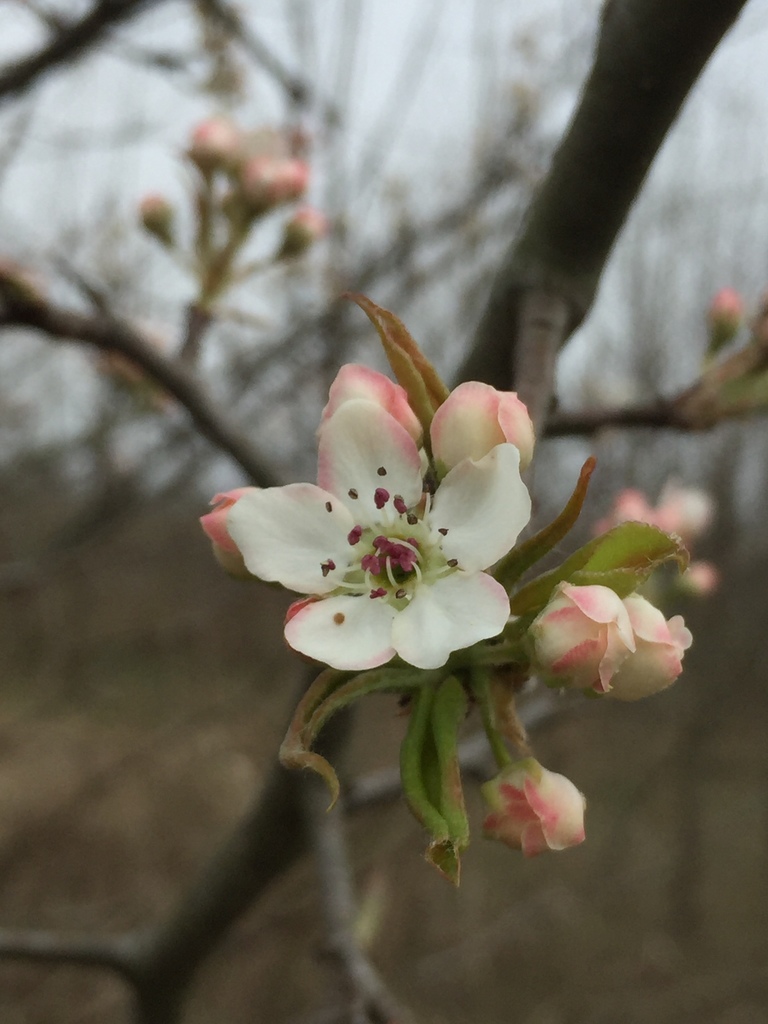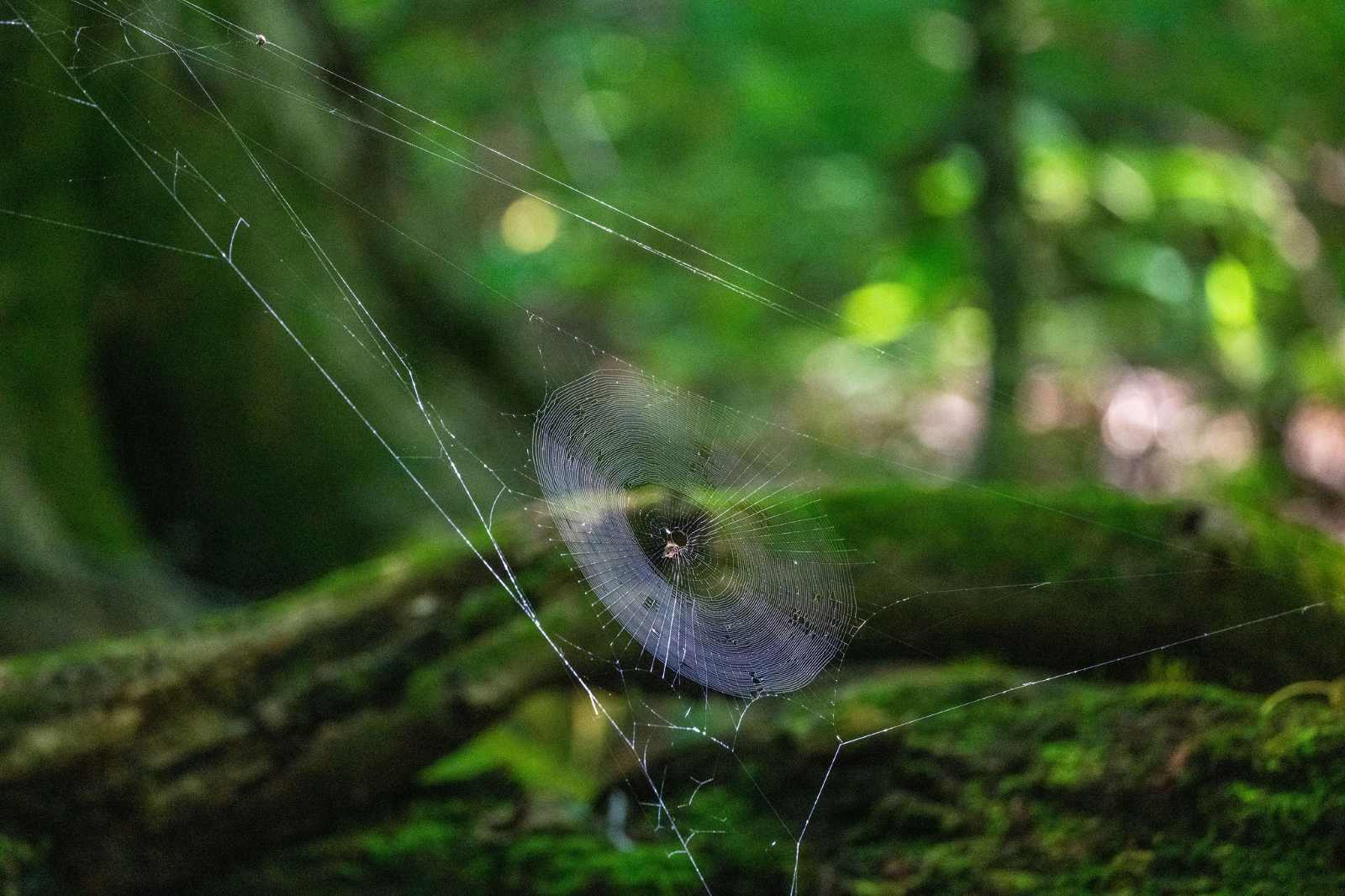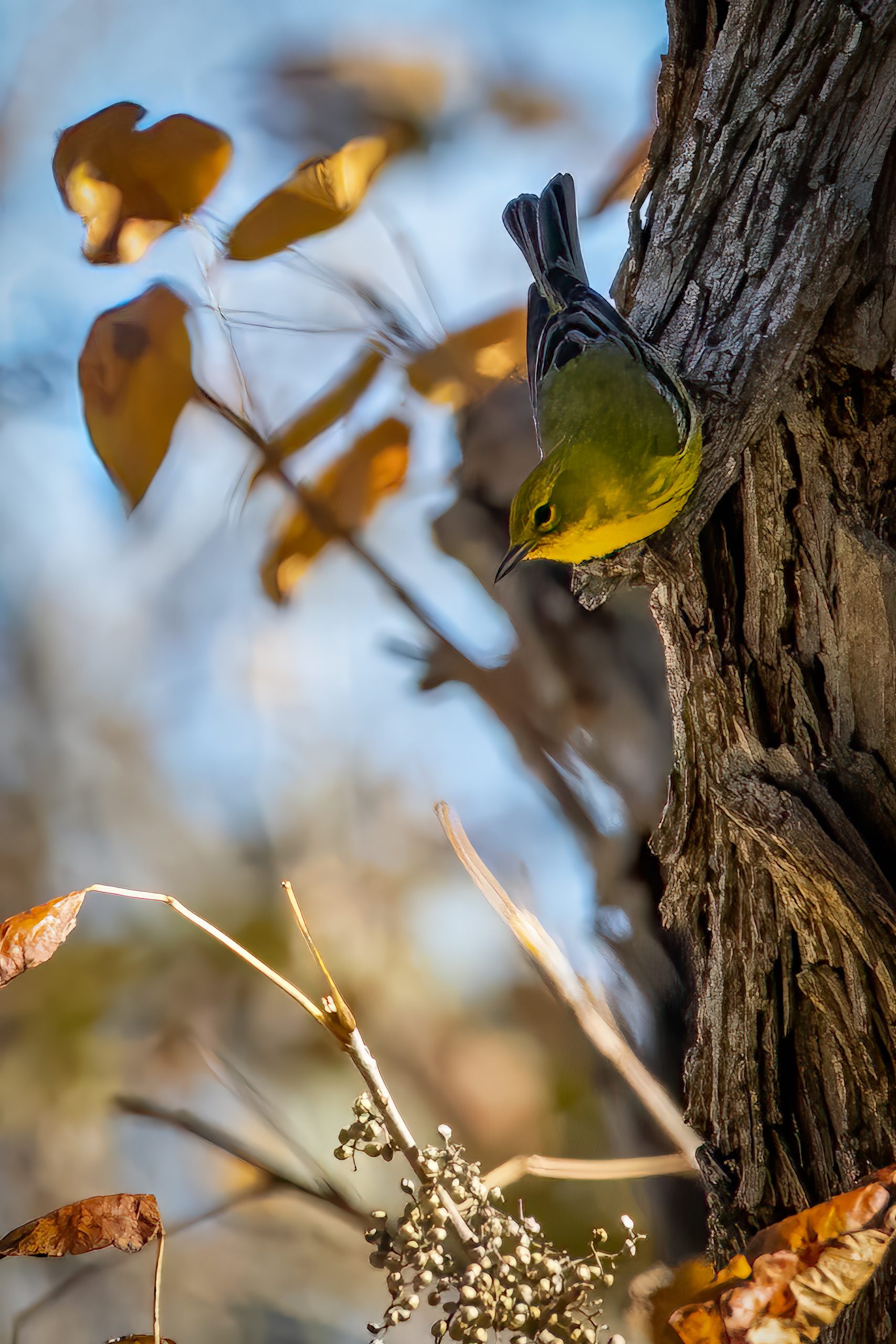
Callery Pear (Invs)
Callery pear blooming at Nonie Werbe Krauss Nature Preserve
Callery Pear: Not a Tasty Alternative
Written By: Ed Pope
Date Published: February 24, 2021
Ed Pope
Part of a series on invasive species by guest blogger Ed Pope
Callery pear is native to China and Vietnam. It was introduced into Europe in the 1800s. It first arrived in the United States at Boston’s Arnold Arboretum in 1906. It was imported by the United States Department of Agriculture in 1916, when a disease called fire blight was ravaging commercial pear growers, who were looking to develop a fire blight-resistant pear tree.
Soon it was used as a rootstock for the commercial pear industry. In the middle of the twentieth century, the Department of Agriculture began promoting Callery pears as an ornamental tree, because in the spring they produce bountiful white flowers. They became very popular with landscapers since they were attractive, inexpensive, fast-growing and tolerant of a wide variety of soil conditions.
Unfortunately, the Callery pear has two major drawbacks. One is that it has very weak branches, which usually fall apart in storms when they become about 25 years old. The second is that it has now become invasive and is damaging native forests.
The Bradford pear variety became very popular as a landscape tree. Bradford pears all have identical DNA and they cannot pollinate each other. When only Bradford pears were being planted, Callery pears were not a problem since no fertile seeds were produced even if there were Bradford pears near each other. However, numerous other varieties (Cleveland Select, Whitehouse, Aristocrat and others) were developed in an attempt to come up with a variety that had stronger branches. Since these differed genetically from Bradford pears, it became possible for Callery pears to reproduce any time two different varieties were within 300 feet each other. Birds eat the small fruits that they produce and transport their seeds. This is how Callery pear became an invasive tree.
The Indiana Invasive Species Council submitted a list of plants that they thought should be banned to the Indiana Department of Natural Resources’ Natural Resources Commission. Callery pear was on that list, but when the commission released its proposed rule, it had been removed. There had been major pushback from the horticulture industry since they had large inventories of Callery pears. To get the rule adopted quickly, DNR elected to remove the Callery pear. (See the complete list in the Indiana Terrestrial Plant Rule brochure.)
The Indiana Native Plant Society recommends these trees as alternatives to Callery pears:
- Redbud
- Serviceberry
- Hop hornbeam
- American hornbeam
- Pagoda dogwood
More on the Callery pear can be found in this Purdue University video.
Callery pear trees pop up on a number of CILTI properties. The closer to suburban development, the heavier the infestation tends to be. The stewardship team usually tackles Callery pear trees by cutting and treating the stumps. Whether that cutting is done by a hand saw or a chainsaw is determined by the size of the tree. At Nonie Werbe Krauss Nature Preserve, they are a major nuisance, taking over an oak-hickory planting done back in 2008. There the majority of the cutting is done with chainsaws. This property is a perfect example of what Callery pears can do when they take over an area.
Want to help CILTI restore natural areas? Check out volunteer opportunities here. You can help us improve the health of forests and other natural habitats.

Ben Valentine
Guest Blogger
Ben Valentine is a founding member of the Friends of Marott Woods Nature Preserve and is active in several other conservation organizations. He leads a series of NUVO interviews with Indiana's environmental leaders, and he cherishes showing his son all the wonders of nature he grew up loving.

DJ Connors
Guest Blogger
DJ Connors, a Central Indiana native and late-to-life hunter, combines a lifelong appreciation for wildlife and the outdoors with a deep passion for exploring the natural beauty of the area he has called home for most of his life. As a husband and father of three, he is committed to ensuring his children have the same opportunities to connect with nature and appreciate the outdoors in their community. DJ’s unique journey into hunting emphasizes sustainability, responsible stewardship, and the importance of preserving these experiences for future generations.

Bridget Walls
Guest Blogger
Bridget is our first ever Communications and Outreach Intern. She is a graduate of Marian University, where she combined English, studio art, and environmental sciences in her degree studies. As treasurer for Just Earth, the university's environmental club, she helped plan events encouraging a responsible relationship between people, nature, and animals.

Jordan England
Guest Blogger
Jordan England is a lifelong Shelby County resident who graduated from Waldron Jr. Sr. High School (just a few miles from Meltzer Woods!). After earning her B.S. degree in Retail Management from Purdue University, she returned to Waldron to start a family with her husband, Brian. Together they have 3 young children and enjoy sharing with them their love of the community. Jordan is the Grants and Nonprofit Relations Director at Blue River Community Foundation, managing BRCF’s grant program, providing support to local nonprofits, and promoting catalytic philanthropy in Shelby County.

Cliff Chapman
President and CEO
As CILTI’s President and CEO, Cliff keeps CILTI’s focus on good science and stewardship. He’s mindful that the natural places you love took thousands of years to evolve and could be destroyed in a single day, and that knowledge drives his dedication to their protection.

Stacy Cachules
Chief Operating Officer
Among her many key duties as Assistant Director, Stacy has the critical task of tracking our budget, making sure we channel donations for maximum efficiency. When her workday’s done, Stacy loves to spend time with her two young boys—and when not traveling, she’s likely planning the next travel adventure.

Ryan Fuhrmann
Vice Chair
Ryan C. Fuhrmann, CFA, is President and founder of Fuhrmann Capital LLC, an Indiana-based investment management firm focused on portfolio management. Ryan’s interest in land conservation centers around a desire to help preserve natural habitats for wildlife and the subsequent benefits it brings to people and the environment.

Joanna Nixon
Board Member
Joanna Nixon is the owner of Nixon Consulting, an Indianapolis-based strategy and project management firm focused on the nonprofit sector. She currently serves as the Philanthropic Advisor for the Efroymson Family Fund. Prior to opening her consulting practice in 2000, Joanna was vice-president for grantmaking at Central Indiana Community Foundation (CICF). Joanna has more than 25 years of experience in the nonprofit and arts and culture sector. She is passionate about the environment and loves bringing big ideas to life and creating high-quality arts and culture programs and experiences. Joanna enjoys outdoor adventures, including competing in fitness obstacle course races and hiking with her high energy Australian Cattle Dog, Jackson.

Karen Wade
Board Member
Before retiring, CILTI board member Karen Wade worked for Eli Lilly & Co. In retirement she volunteers for a number of organizations, including the Indiana Master Naturalist program, Johnson County Native Plant Partnership CISMA, Meadowstone Therapeutic Riding Center, and Leadership Johnson County.

David Barickman
Development Systems Manager
Born and raised in Central Illinois, David spent many days as a child wandering around the river, forest and lakes there. He works behind the scenes as a key member of our fundraising team. When not working, David loves to be outdoors hiking, fly fishing, kayaking or woodworking.

Jamison Hutchins
Stewardship Director
Jamison leads our stewardship team in caring for the land that is so important to you. He comes to our team after eight years as Bicycle and Pedestrian Coordinator for the city of Indianapolis, where his work had a positive impact from both health and environmental perspectives.

Jen Schmits Thomas
Media Relations
An award-winning communicator and recognized leader in Central Indiana’s public relations community, Jen helps us tell our story in the media. She is the founder of JTPR, which she and her husband John Thomas own together. She is accredited in public relations (APR) from the Public Relations Society of America, and loves to camp and hike in perfect weather conditions.

Shawndra Miller
Communications Director
Shawndra’s earliest writing projects centered around the natural world, starting when a bird inspired her to write her first “book” in elementary school. Now she is in charge of sharing our story and connecting you to our work. Through our print and online materials, she hopes to inspire your participation in protecting special places for future generations.

Phillip Weldy
Stewardship Specialist
Phillip enjoys nature’s wonders from an up-close-and-personal perspective as he works to restore the natural places you love. As an AmeriCorps member in Asheville, NC, he had his first full immersion in relatively undisturbed land while reconstructing wilderness trails in National Parks and National Forests.


December 2, 2025
Our board member, John Bacone, reflects on conserving key natural areas. He led the Department of Natural Resources Division of Nature Preserves for over four decades. Years ago, when I was working in the Indiana DNR Division of Nature Preserves (DNP), I asked Bob Waltz, the State Entomologist, how [...]
Betley Woods,Blossom Hollow,Homepage,Meltzer Woods,Newsroom,Properties,Stewardship


September 26, 2025
Want to see more nature protected in 2025 and beyond? Now is your chance to make twice the difference for Indiana’s lands, waters, and wildlife.
Fred & Dorothy Meyer Nature Preserve,Newsroom,Properties,Stewardship


June 26, 2025
FOR IMMEDIATE RELEASE Acquisition adds to property set aside for wildlife habitat and shielded from development The Central Indiana Land Trust, Inc. (CILTI) has closed on the purchase of an 80-acre forested parcel in Brown County, adding to a cluster of protected properties and ensuring habitats endure for several [...]
Newsroom,Press Releases,Properties




























